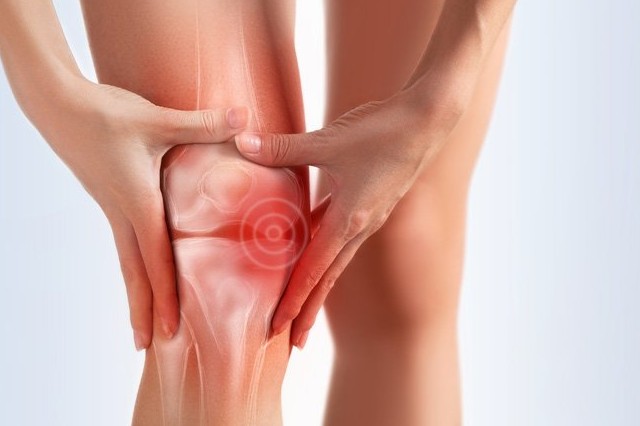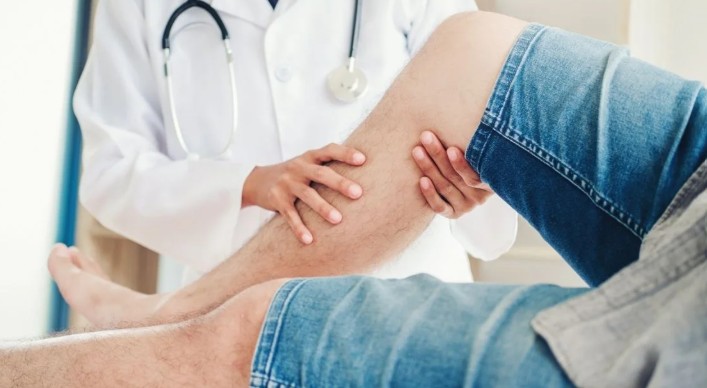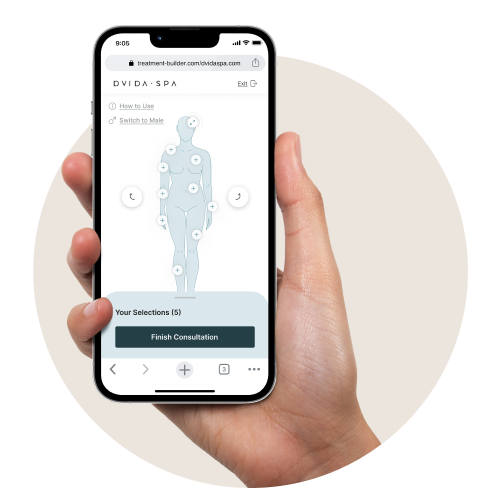
Acute and chronic knee pain can be separated into two. Acute knee pain is caused by a knee injury or twisting of the knee. Chronic pain occurs later after some time and increases in strength. Chronic pain, unlike acute pain that is related to a circumstance or a period (like if you trip and twist a knee), is more of an ache.
In a Hurry? Dial 984-253-3377 Now!
So What Are the Causes of Knee Pain?
1. Strains & Sprains Differences
They’re used interchangeably. Technically, they’re not the same. When you overstretch or overuse a muscle, it is a strain. A sprain is an injury to a ligament or a tendon. Strains may happen if you start a new exercise routine. Sudden stress to the body can rupture muscles, ligaments, tendons, and soft tissues if not stretched. Our body compensates for potential injury because it adjusts to it, such as when running. It strengthens our muscles and ligaments. Running after an extremely inactive lifestyle may be a risky exercise because our body is not yet conditioned to compensate. Stretch before adopting a new exercise program. Do that, please. Attempt to start slowly and give your body some time to build up some strength before overdoing it.
Sprains are due to a stretched or torn muscle that causes of knee pain. The sprain will either be swollen and bruised or painful. This is particularly because it is a torn ligament. Tears are worse than sprains or strains. Tendons, muscles, ligaments, or other tissues that have ruptured are pulled apart. The torn ends seriously disrupt their form. It is useful to know where your injury is. It will help you know whether it’s a strain or a sprain. Strains happen in the muscle groups in the calves and thighs. Sprains will happen around joints such as wrists, ankles, or knees.
2. Ligament Problems
The increasing number of ligament injuries annually has reportedly been fueled by increased interest in games. More than 50,000 people are hospitalized for ligament repairs. Women are eight times more likely to be injured by an ACL sprain compared to men, because of high heels or perhaps because of anatomical variations, some believe. ACL and MCL sporting injuries are not uncommon. Twisting your knee, slowing down while running, or jumping and landing are the most common ways of causing them. Football, skiing, tennis, and basketball are sports with high risks.
3. Meniscus Tears Can Be Devastating
Meniscal injuries can be caused by sporting trauma or innocuous activities like squatting. Most likely to occur in tennis, football, and basketball players. Meniscus injuries are more frequent in those over 40 years old. It most commonly occurs with the foot firmly fixed on the ground and the bending of the knee. This is usually a result of shoes that have cleats, which hold the lower leg in place but do not permit it to be moved along with the knee.
4. Fractures
There are numerous reasons a bone will break. A car accident or traumatic injury will cause a bone to break. Stress fractures break bones too. This is when a bone is repeatedly stressed and wears down under compression, resulting in a break.
5. Dislocation
More often than not, as a person moves about, a joint is dislocated. Position is not less than optimal, but off-center. Dislocation is the name given to such a situation.
6. Chondromalacia
Chondromalacia is a degenerative process that occurs as a result of long-standing wear and tear to the kneecap. Cartilage becomes brittle and softens as a function of age. This degenerative illness is caused by the constant grinding of the kneecap over the femur. The joint cartilage of the articular joint becomes frayed, then soft. It can also be caused by one traumatic blow. This illness may be the etiology of pain at the front of the leg, particularly when walking uphill and downhill. It can also result in stiffness and grinding when sitting for a long time. The condition is common in middle-aged patients. It is more common in women and can begin as early as adolescence.

In a Hurry? Dial 984-253-3377 Now!
7. Arthritis: Osteoarthritis
It is a wear-and-tear knee condition resulting from natural occurrences. It happens to individuals who are in their middle and older. Osteoarthritis is a degenerative form of arthritis that deteriorates the cartilage. It starts with pain, stiffness, and swelling, but may contribute to prolonged pain.
8. Arthritis: Rheumatoid Arthritis
This form of arthritis, in contrast to osteoarthritis, does not gradually wear away cartilage but inflames joints (in the majority of instances, several at a time) until they are devastated. Rheumatoid arthritis most typically strikes middle-aged women. But it can strike anybody.
9. Arthritis: Crystaline Arthritis
When small calcium phosphate or sodium urate becomes wedged in the joint, inflammation is caused. It is like getting a bit of sand in your eye. It causes inflammation in the area. This type of arthritis occurs most frequently in middle-aged men.
Skin slides over the bones smoothly because of the bursae, which are between the tendon and the skin. Inflammation of the bursae causes knee pain. Knees contain bursae that facilitate the kneecap to slide smoothly without pain. Bursae swell up due to repeated kneeling or because of direct pressure on the knee.
Post-patellar Bursitis occurs more in individuals whose occupations require extensive bending of the knees, such as house cleaning, carpet installation, or electricians. It can be caused sometimes by infection of the pouches. Most often, it’s treated without surgery (although in severe cases it may be needed). Preventing the knee from bending and putting pressure off the kneecap is the remedy.
How Does a Doctor Diagnose the Causes of Knee Pain?
Three elements of the test are done whenever a patient visits a specialist to help diagnose a knee issue. They include diagnostic imaging, physical examination, and medical history. Your knee doctor will inquire about your history to ascertain whether the issue is hereditary, lifestyle, or due to a sports injury. Your physician will be in a position to ascertain the specific cause of your injury and prescribe the correct treatment. Inform your doctor if steroids led to joint inflammation. Lyme Disease, due to the deer tick, or rheumatoid arthritis, can lead to joint inflammation.

Summing Up!
Once your doctor has talked about your medical history, they will carry out a physical examination to see if something is wrong. The doctor will carry out a physical examination to determine what are the causes of knee pain.
Don’t wait until the pain becomes unbearable. Go see an experienced knee professional today, like Dvida Med Spa, and start your path towards healing. Whether you need physical therapy, imaging, or medical attention, understanding what is happening in your knee is the solution to long-term relief.
Take charge of your health—speak with a knee professional today and depart feeling pain-free! Dvida Medical Spa Offers PRP Therapy In Cary, Raleigh & Chicago! Schedule your appointment now and take the first step towards a pain-free, stronger you.

